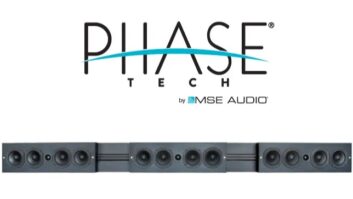New York — The future of digital still photography has less to do with still photographs than with video, HD output, multimedia manipulation of images in-camera and built-in wireless connectivity.
The glimpse at digital photography’s future comes courtesy of several new image processors that were announced last month. These chips, the heart of a digital camera’s functionality, won’t find their way into end-user product until year’s end.
The push for more advanced features beyond still capture is being spurred by two forces: falling prices and the waning importance of megapixels and optics, said Gary Baum, senior marketing VP, NuCore. “Camera makers need to look elsewhere to add value.”
NuCore, which manufactures image processors for JVC, Kyocera and Epson, among others, recently introduced a new chip and technology called “electronic Video Jockey” (eVJ) for creating multimedia slideshows in-camera. Cameras that incorporate eVJ will let users automatically assemble slideshows with transition affects and music with just a few clicks, Baum said.
The eVJ technology automatically assigns transition effects and a musical soundtrack to a collection of images so users don’t have to spend too much time fiddling with the camera, Baum added. These slideshows can then be output to an HDTV as NuCore was the first processor maker to offer HD output built into a still camera, Baum said.
Manufacturers will be able to determine how many “scenarios” they will preload with the camera, but the base NuCore offering will be two scenarios with predetermined transition effects and music, Baum added.
According to Baum, cameras incorporating eVJ could be on the U.S. market by the end of the year.
Another chip maker, Zoran, recently announced that its eighth-generation Camera on a Chip (COACH) will offer support for HDMI for outputting digital images onto high-definition televisions.
The new chip will also support three video codecs: Windows Multimedia Video (WMV), MPEG-4 and MPEG-2 which will bring better video recording to still cameras. Zoran’s chips have been used in Konica-Minolta, Olympus, Kodak and Casio cameras, among others.
Cameras that record video in the WMV format will be able to seamlessly integrate with other Window products and offer easier transferring from camera to PC, Zoran said.
Camera makers are also looking at wireless connectivity on the heels of Kodak’s new EasyShare One Wi-Fi digital camera, said Kanika Ferrell, marketing and business development, Texas Instruments.
“Wireless is something to look out for but there are still questions about the usage model,” Ferrell said. “Power consumption is another consideration.”
While wireless and high def are tantalizing novelties, there are still more mundane issues, such as “performance bottlenecks” in basic camera performance, that need to be overcome to improve the basic operation of digital cameras, Ferrell added.













